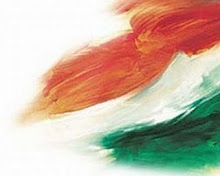Rang De Basanti, the movie which gained popularity not only for the story line that depicts both reality and lost patriotism but also for invoking the feeling thereafter. None of the movies in the past had such a large impact on youth and nationalists alike. Such was the charm and charisma of the film in 2006 that it crossed the national boundaries and impacted the global youth. The film is still so relevant and more than perfect in today’s times that it feels new every time I watch it. And I believe that most of us would agree to this statement. The more you watch it, the more you feel attached to it and fall in love with it.
Rakesh Omprakash Mehra had genuinely hit the right chords of Indian hearts by showcasing corruption in the Indian political system and showing it so brilliantly. We, as Indians have very genuinely agreed to the fact that there is corruption in every minutest atom in the life of an Indian and sadly we have started adjusting to it and finding solace in living with it. We tend to hate politics, call it the drain or the pit where nobody would like to fall and dirty themselves. We condemn and criticise things like anything but would not make a single effort to change things. Sadly the fourth pillar of democracy too has been doing this for long.
Tagged under the genre of drama and comedy, the movie shows profoundness throughout and is able to capture the audience’s attention without a blink. The crowd of cast includes Aamir Khan, Sharman Joshi, Soha Ali Khan, Alice Patten, R. Madhavan, Siddhartha Narayan, Waheeda Rehman, Anupam Kher, Kiron Kher and Atul Kulkarni and all of them made a substantial difference. The film plot revolves around a young woman, Sue, from London who spots a diary of her grandfather who was in the British Police Force posted in India during British Rule in India. Motivated by her grandfather’s writing about Indian revolutionaries, she plans to make a film depicting their life story. She comes down to Delhi for the same and sights the same level of energy in her friend Sonia and her friends- DJ, Karan, Sukhi, Aslam and finally Laxman Pandey. Each one of them represents the youth of day perfectly and the actors have done full justice with their role.
Throughout the shooting of documentary, this generation ‘Y’ refuses to associate themselves with the characters of the past. A youth who believes that patriotism is something that looks good in only history chapters and has no connection with the corrupted India. The film portrays modern youth running parallel with the freedom fighters which intersects at vital points. As the film moves on, a moment in their life turns to be the chemical phenomena that change their life completely yet there had been a slow change of mindset. It transforms them from carefree youth to responsible youth binding the past and future in one spirit. How and what change is behind it, it lays engrossed perfectly in the second half.
Though the film is not inspired from any real life experience, yet there are ingredients from the life of the director, Rakesh Mehra itself and his friends. The film is also tribute to MIG fighters and AIR force who lost their lives in technical fault of the airplane which they were flying. A.R.Rehman’s music as always has been the best with some really foot tapping numbers, Masti ki Pathshala which became the college anthem and topped the chartbusters for long. While another number Ru-ba-ru gives the feeling of enlightenment and freedom from within, Tu bin btaye perfectly portrays trust and selfless love of the lovers. Luka Chupi by Lata Mangeshkar portrays the hide and seek game by a mother and child which undoubtedly goes best with the cinematography.
The Art direction and cinematography of Binod Pradhan leaves speechless leading every frame to perfection. The use of sepia tones to bring contrast to the past and future leaves the viewers stunned. Similarly, the use of natural lighting gives a no make up feel to the lighting. It has been able to perfectly lift the script making no moment dull. Similarly lyrics and dialogues by Prasoon Joshi has a touch of daily used language but unexplored heart.
The film made a social impact beyond director’s vision and encapsulated the whole of India, particularly youth. These type of emotion was showcased in Priyadarshani Mattoo Case and a march against Reservation followed by innumerable same cases.
The movie has been hauled for depicting activism by critics however the message run clear that there the Mc Donald’s and designer wear generation of the country needs to stand up for what is right. It believes that there are only two ways of living life; either accept conditions as they exist or take responsibility to change them. A good movie is one that opens the windows of the viewers mind and adds to their understanding. Rang De Basanti is successful in doing this. As the tagline says ‘A generation awakens’, the film is a light hearted youthful drama which gained applauds from both the critics and audience alike.



